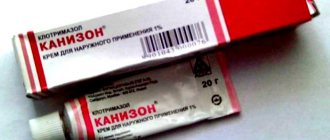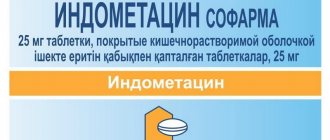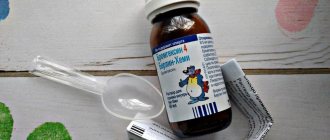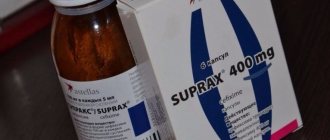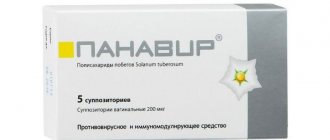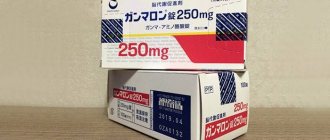Pantocalcin (international name - Hopanthenic acid, Hopantenic acid) is a broad-spectrum nootropic drug aimed at eliminating neurotic disorders, compensating for stressful situations and psycho-emotional overload, increasing performance and mental activity, while simultaneously reducing motor excitability and the ability to regulate behavioral attitudes. Used to stimulate activity in cases of cerebral insufficiency of exogenous organic origin.
Features of the composition. Release form of the medicine
What is the drug "Pantocalcin"? The composition and form of release is the first thing you should familiarize yourself with. The drug is available in the form of white flat-cylindrical tablets.
The main active ingredient is calcium hopantenate - this is the calcium salt of hopantenic acid. One tablet contains approximately 0.25 g of this substance. The composition also contains other components, in particular, potato starch, magnesium bicarbonate, talc and calcium stearate - these substances are auxiliary.
Pantocalcin price, where to buy
The price of Pantocalcin tablets in Russia is on average 350 rubles (50 pieces, 250 milligrams). And the price of Pantocalcin in Ukraine is approximately 300 hryvnia. For children, it is best to choose Pantocalcin, 250 milligrams of the active substance per tablet.
- Online pharmacies in RussiaRussia
- Online pharmacies in KazakhstanKazakhstan
ZdravCity
- Pantocalcin tablets 250 mg 50 pcs. JSC Valenta Pharmaceuticals
444 rub. order - Pantocalcin tablets 500 mg 50 pcs. JSC Valenta Pharmaceuticals
RUR 714 order
Pharmacy Dialogue
- Pantocalcin tablets 250 mg No. 50 Valenta Pharmaceuticals
RUB 471 order
- Pantocalcin tablets 250 mg No. 50 Valenta Pharmaceuticals
486 rub. order
- Pantocalcin tablets 500 mg No. 50 Valenta Pharmaceuticals
RUR 748 order
show more
How does the drug affect the body?
The calcium salt of hopantenic acid has a direct effect on GABA beta receptors. In addition, the drug affects the neurotransmitters of the serotonin, dopamine and norepinephrine systems.
According to research results, the active substance of the drug “Pantocalcin” normalizes glucose metabolic processes in the body, in particular, improves the digestibility of sugar in brain cells. This has a positive effect on the functioning of the cerebellum, hypothalamus, subcortical ganglia and cortex.
In addition, this substance normalizes the exchange of nucleic acids in nerve tissues, stimulates anabolic processes, and improves oxygen supply to cells. Like most nootropic drugs, Pantocalcin has a positive effect on memory and the ability to concentrate, and facilitates intellectual work. Along with this, the drug has mild sedative properties, which helps fight pathological hyperactivity.
The medicine also increases detrusor tone and enhances the vesical effect, which helps normalize the processes of urine excretion from the body. The drug is also used in the treatment of chronic alcoholism - the tablets help alleviate the patient’s condition after giving up alcohol.
Comparison of drugs
Pantocalcin has several analogues, a comparison of which is given below.
Pantocalcin or Glycine
Glycine is a simple aminoacetic acid that is taken to increase mental activity, normalize sleep, and strengthen memory. The drug takes an active part in brain metabolism.
The drugs are very often prescribed by specialists together to enhance the effect. But only a doctor can tell which drug to choose after examining the patient and making a diagnosis. The difference is the price. The cost of Glycine is many times less.
Pantocalcin or Neuromultivit
Neuromultivit is a vitamin complex that contains B vitamins. Pantocalcin contains calcium. The action of Neuromultivit is aimed at normalizing tissue metabolic processes. This medicine is used to treat diseases of the nervous system. Pantocalcin is prescribed for cognitive pathologies and changes in brain functioning.
Pharmacokinetic information
According to research results, the active components are quickly absorbed by the digestive tract, after which they enter the bloodstream. The maximum concentration of hopantenic acid salt is observed an hour after taking the tablet. The active substance is found in large quantities in the tissues of the kidneys, liver, skin, and gastric wall.
The drug does not form metabolites and is excreted from the body unchanged within two days. Most of it leaves the body with urine, and the rest is excreted in feces.
Benefits and harm to the body
After taking Pantocalcin, patients note that their general condition improves. The person becomes more alert and full of energy. Memory is strengthened and perception is improved. Parents note that children have an increased tendency to learn and remember. Some parents notice that their children become calmer and cope better with stressful situations.
Harm to the body can be caused if Pantocalcin is taken spontaneously. It is necessary to adhere to the prescribed dosage.
Indications for use
When is it necessary to take Pantocalcin tablets? What is this medicine prescribed for? If we talk about adult patients and adolescents over 12 years of age, therapy is indicated for them in the following cases:
- with organic brain lesions, especially if they are accompanied by impaired cognitive functions;
- for the correction of adverse reactions while taking antipsychotic drugs;
- for various forms of neuroleptic syndrome;
- as part of combination therapy for some forms of schizophrenia;
- for the treatment of cerebrovascular insufficiency, especially if the pathology has developed against the background of atherosclerosis;
- to eliminate the consequences of various neuroinfections, including encephalitis;
- during the rehabilitation period for previously suffered traumatic brain injuries;
- as part of complex treatment for senile dementia;
- for pathologies of the nervous system that are accompanied by severe pain (trigeminal neuralgia);
- if you have problems with urination (if they are of neurogenic origin);
- with intense mental and physical stress, chronic stress, which is accompanied by decreased performance;
- in case of memory problems, concentration problems, decreased attention;
- the drug is included in the treatment regimen for epilepsy.
You may notice that Pantocalcin is prescribed to adults to solve a wide variety of problems.
pharmachologic effect
The active ingredient Pantocalcin has neuroprotective, neurometabolic and neurotrophic properties. According to the instructions Pantocalcin:
- Stimulates anabolic processes in neurons;
- Increases the brain's resistance to the harmful effects of toxic substances and hypoxia;
- Has anticonvulsant and analgesic effects;
- Reduces motor excitability while streamlining behavior;
- Increases resistance to stress, as well as mental and physical performance;
- Normalizes GABA content in chronic alcohol intoxication.
When do children need therapy?
The drug "Pantocalcin" is also used for children, sometimes from the first months and even weeks of life. Of course, the list of contraindications looks different. The medicine is prescribed:
- in the presence of various forms of epilepsy;
- the child has mental and/or mental retardation;
- with cerebrosthenic syndromes;
- for perinatal encephalopathies;
- the drug helps in the presence of neuroses of various origins;
- as part of complex therapy for various forms of cerebral palsy;
- indications include attention deficit disorder, hyperactivity;
- the drug is prescribed in the presence of convulsions, tremors in the limbs;
- for stuttering (in particular, the clonic form of the pathology).
Of course, only the attending physician can prescribe Pantocalcin tablets after an examination and all the necessary tests. It is prohibited to use the medicine yourself.
Analogues of Pantocalcin
Level 4 ATX code matches:
Bravinton
Acefen
Carnicetine
Pyracesin
Nooclerin
Semax
Piracetam
Olatropil
Fezam
Vinpocetine
Cerebrocurin
Cavinton Forte
Calcium Hopanthenate
Glutamic acid
Cephabol
Olanzapine
Cerebrolysate
Pramistar
Sidnocarb
Vinpotropil
Analogs of Pantocalcin are:
- Pantogam;
- Gopantham;
- Calcium Hopanthenate.
The drug "Pantocalcin": instructions for use
Under no circumstances should you use nootropic drugs without first consulting a specialist. Only a doctor who has familiarized himself with the patient’s medical history, medical history and test results will be able to select the appropriate dosage and schedule for taking the drug Pantocalcin. The instructions for use contain only general information. The treatment regimen largely depends on the patient’s condition, the form and severity of the disease.
- The daily dose for various forms of epilepsy and hyperkinesis is 1500-3000 mg. This amount of the drug is usually divided into several doses. Treatment in this case is long-term - from five months or more (for epilepsy, therapy lasts about a year).
- To correct side effects from treatment with antipsychotics, patients are prescribed 500-1000 mg three times a day. Therapy lasts from 1 to 3 months.
- The daily dose for various urination disorders is 2-3 g of the calcium salt of hopantenic acid (this amount is divided into several doses). Treatment is carried out over two weeks or more (sometimes several months).
- Patients with different forms of schizophrenia are recommended to take 500 mg (two tablets) of the active substance three times a day.
- If we are talking about supporting the body during periods of stress and heavy loads, then the recommended dose is 250 mg of hopantenic acid three times a day.
Of course, only a doctor can prescribe the medicine Pantocalcin. The dosage may be adjusted depending on the patient's condition and response to therapy.
Notes
- ↑ 1 2
Hopanthenic acid (Russian).
Encyclopedia of drugs and pharmaceutical products
. Radar Patent. — Instructions, application and formula. - Description of Pantocalcin® (Pantocalcin) - Radar Encyclopedia: instructions for use of the drug Pantocalcin® and composition, reviews, contraindications, Pantocalcin at low prices in pharmacies (unspecified)
. www.rlsnet.ru. Access date: January 10, 2021. - ↑ 1 2 3 4 Shtok V.N.
Pharmacotherapy in neurology: A practical guide. — 3rd ed., erased. - M.: Medical Information Agency LLC, 2003. - P. 68. - 301 p. — ISBN 5-89481-123-6. - Noda S., Haratake J., Sasaki A., Ishii N., Umezaki H., Horie A.
Acute encephalopathy with hepatic steatosis induced by pantothenic acid antagonist, calcium hopantenate, in dogs. (English) // Liver. - 1991. - Vol. 11, no. 3. - P. 134-142. — PMID 1886458. [] - Kajita M., Iwase K., Matsumoto M., Kuhara T., Sinka T., Matsumoto I.
Clinical and biochemical studies in a case of acute encephalopathy associated with calcium hopanthenate administration (Japanese) // No to hattatsu. Brain and development. - 1990. - Vol. 22, 第3数. - P. 267-273. - PMID 2194543. [] - Kimura A., Yoshida I., Ono E., Matsuishi T., Yoshino M., Yamashita F., Yamamoto M., Hashimoto T., Shinka T., Kuhara T.
Acute encephalopathy with hyperammonemia and dicarboxylic aciduria during calcium hopantenate therapy : a patient report. (English) // Brain & development. - 1986. - Vol. 8, no. 6. - P. 601-605. — PMID 3826551. [] - Sugimoto T., Yasuhara A., Nishida N., Sakane Y., Sugimoto Y.
3 cases of acute encephalopathy associated with calcium hopantenate administration (Japanese) // No to hattatsu. Brain and development. - 1983. - Vol. 15, 第3数. - P. 258-259. — PMID 6882599. []
Features of therapy in children
As already mentioned, this medicine is widely used in pediatric practice.
- If speech or mental development is delayed, children need to take 500 mg of the active substance 3-6 times a day. The same dosage is maintained during the treatment of cerebrosthenic syndrome. Therapy lasts 2-4 months depending on the severity of the pathology and the condition of the child.
- If we are talking about the treatment of epilepsy, then children, as a rule, take 1-2 tablets 3-5 times a day. Therapy in this case is longer - the drug is used for one year.
- For the treatment of enuresis and other urinary disorders, the daily dose is 250-500 mg of the active substance.
- If Pantocalcin is taken to eliminate side effects from the use of antipsychotics, then young patients take 1-2 tablets three times a day.
Reviews from doctors and patients about the use of Pantocalcin for adults
Dmitry, 44 years old, neurologist: “During atherosclerotic processes in the vessels that supply the brain and its structures, it is important to maintain sufficient blood supply to these organs. To do this, I recommend that my patients take Pantocalcin. It allows nervous tissue to adapt to conditions of insufficient supply and enhances microcirculation. I haven’t noticed any side effects among patients yet.”
Evelina, 34 years old, psychiatrist: “Hopantenic acid preparations have proven themselves well for the treatment of hypomanic disorders and some types of epilepsy. In my practice, I have been observing for a long time that Pantocalcin quickly improves the general condition of patients with the above diseases. Side effects were extremely rare. My patients did not have any allergies to the drug.”
Maria, 25 years old: “I have been suffering from epilepsy for 4 years. Unfortunately, because of this illness I cannot afford many of the joys of life. It all ends with me being afraid to take care of myself, because an attack might begin. I have been using Carbamazepine for a long time. I began to feel better when I also started taking Gopantam. Now I can control the attacks and concentrate better when doing mental work.”
Contraindications: when is therapy prohibited?
Is it possible to take the drug “Pantocalcin” in all cases? Reviews from experts indicate that the drug is in most cases well tolerated by patients, regardless of their age. However, there are some limitations to the treatment. In particular, the medicine should not be used by persons with hypersensitivity to any of the components contained in the tablets.
The list of relative contraindications includes pregnancy. The drug should not be taken during the first trimester. Further therapy is possible, but the dosage is selected by the attending physician. To date, there is no information about whether the active substances are excreted in breast milk. In addition, this medicine should not be taken if you have severe kidney disease, in particular progressive renal failure.
special instructions
There are a number of special instructions that you should read before your doctor uses the drug:
- The drug can prolong the effect of barbiturates, enhance the effect of central nervous system stimulating drugs, anticonvulsants, local anesthetics (novocaine, procaine).
- Reduces the side effects of phenobarbital, finlepsin (carbamazepine), and antipsychotic drugs.
- Enhances its effects in combination with glycine and xydiphone.
- Strictly contraindicated in the first trimester of pregnancy; there is no data on safety in other periods; in the opinion of the author, use during pregnancy is undesirable.
- The tablet form is not recommended for children under 3 years of age.
Possible side effects
Many patients are interested in complications that may arise during therapy, especially if doctors prescribe Pantocalcin for children. In fact, the drug is well tolerated by the body. The occurrence of adverse reactions was recorded only in isolated cases.
As a rule, complications that appear during therapy are allergic reactions. Patients complain of skin redness and itching. Swelling and urticaria may develop.
It is extremely rare that the disease is accompanied by disorders of the nervous system - headaches, severe drowsiness, and periodic dizziness. Any deterioration should be reported to your doctor.
Customer Reviews
Inna Makarenko, Moscow
“The doctor prescribed Pantocalcin to my baby along with Glycine. Due to a traumatic brain injury, his memory was impaired and he became insanely absent-minded. We took the drug, the course lasted two months. I noticed the first improvements after two weeks. The child has become more diligent, attentive and has a desire to learn.”
Anastasia Zakharova, Petropavlovsk-Kamchatsky
“After the accident, my dad’s brain function was disrupted; he even stopped recognizing his relatives. We were very afraid and worried, but the doctors fought as best they could. Pantocalcin was prescribed. The course of treatment was very long, but nevertheless the drug helped me come to my senses. Restore memory. Dad regained his sanity and attention. I learned to concentrate again.”
Overdose: description of symptoms and treatment regimen
What problems are observed when taking too large doses of Pantocalcin? Reviews from experts and the results of clinical trials indicate that the medicine is well tolerated even in large doses. However, in some cases, increased side effects may occur. Patients complain of drowsiness, severe weakness, dizziness (sometimes to the point of loss of consciousness).
Therapy boils down to gastric lavage and taking sorbents. In case of serious disorders, treatment is selected depending on the symptoms.
Description
Hopanthenic acid, which is part of the composition, strengthens memory, perception, and concentration. Mental function returns to normal, readiness for learning improves. It has a mild sedative effect, which leads to a decrease in hyperactivity.
In the case of oral administration, the drug is well absorbed from the gastrointestinal tract and reaches the maximum concentration in the blood plasma after 60 minutes. It leaves the body in the same form through the kidneys. It leaves the body in full after 48 hours.
Pantocalcin is not an antibiotic, but the simultaneous use of two groups of medications is allowed. The memory drug is taken regardless of meals. The duration of treatment is determined only by the attending physician individually, depending on the indications and condition of the patient. Available in pharmacies only with a doctor's prescription.
Can be taken during menstruation. Many doctors even advise using the product on critical days, as it thins the blood. The product is also allowed to be used by HIV-infected patients. In this case, dosage adjustment will be required.
Pantocalcin should not be taken with alcoholic beverages, as the risk of side effects increases. It is also necessary to be careful when driving a car. Does not affect blood pressure in any way.
The drug "Pantocalcin": analogues and substitutes
Unfortunately, for one reason or another, this medicine is not suitable for everyone. What should patients do in such cases? Is it possible to replace the drug “Pantocalcin” with something?
Analogues of the drug exist. For example, the same active substance is present in drugs such as Calcium Hopanthenate and Pantogam. The list of possible substitutes also includes “Gopantam”. Of course, only a doctor can choose an analogue - using nootropic drugs on your own can be dangerous.
Interaction with other drugs
Strengthens and prolongs the effect of central nervous system stimulants, hypnotics, barbiturates, anticonvulsant medications, local anesthetics, corrects the negative effects of neuroleptics (antipsychotics), Phenobarbital, Carbamazepine. The action of the active biological substance contained in Pantocalcin is potentiated by Glycine and Xidifon.
Reviews: what do patients say? Experts' opinion
The range of applications of nootropic substances is very wide. But what do they say about the drug Pantocalcin? Feedback from experts is mostly positive. Patients also speak well of them. The tablets help normalize cerebral circulation and improve the functioning of the nervous system. They also have a positive effect on the development of the child’s central nervous system in the presence of certain deviations.
It is only worth noting that this drug, as a rule, is part of a complex therapy - taking nootropic drugs alone cannot always provide the expected result. In addition, in most cases, patients are recommended to undergo several repeated courses of treatment to achieve the desired effect.
Adverse reactions due to the use of tablets are rarely recorded. There are few contraindications for use, which is one of the advantages of this medicine. Patients say that they actually feel noticeable improvements during therapy. And the cost of the medicine is not so high, because the prices for some products with a similar composition are much higher. This is why Pantocalcin is so often used in modern medical practice.
Pantocalcin
Active substance:
Hopantenic acid*
Pharmgroup:
Nootropics
Average price in pharmacies
| Name | Manufacturer | average price |
| Pantocalcin 0.25 n50 tablet | VALENTA PHARMACEUTICS | 473.00 |
| Pantocalcin 0.5 n50 tablet | VALENTA PHARMACEUTICS | 748.00 |
Analogs for the active substance:Gopantham Hopantenic acid Calcium salt of hopantenic acid Calcium hopantenate Pantogam | Application area:Age-related involutional changes in the brain Recovery period for athletes Restoring the physical performance of athletes Secondary disorders of mnestic functions High psycho-emotional stress High psycho-emotional stress High physical and mental stress High physical activity Huntington's disease (chorea) Rheumatic hyperkinesis Choric hyperkinesis Hyperkinesis of central origin Hyperkinesis Degenerative dementia Dementia Presenile dementia Senile dementia Senile dementia Infantile cerebral palsy Long-term overload and stress Prolonged physical and mental stress Prolonged physical activity Daytime enuresis Shaking paralysis Urinary retention Impaired mental function Mental retardation Stuttering Stuttering and other speech defects in children Slow development of intellectual abilities in children and adolescents Slow mental development in children Difficulty acquiring specific writing skills Difficulty concentrating Difficulty concentrating Difficulty in mental functioning Difficulty urinating Obstructed urine flow Idiopathic bladder instability Idiopathic parkinsonism Intellectual disability Intellectual-mnestic disorder Intellectual-mnestic disorder Intellectual loads Intense mental and physical activity Intense physical activity Mental infantilism Mental infantilism Clonic form of stuttering Cognitive impairment in degenerative and vascular diseases of the brain Cognitive impairment in neurotic disorders Cognitive disorder Cognitive impairment Cognitive disorders Decreased concentration Correction of side effects of neuroleptics Correction of side effects of neuroleptics Logoneurosis Dementia Metabolic cerebral insufficiency Metabolic and vascular disorders of the brain Metabolic disorders of the brain Intense mental activity Intellectual impairment Cognitive impairment Violation of mnestic functions Urinary dysfunction Urinary dysfunction Violation of mental activity Violation of mental activity Thinking disorder Impaired bladder emptying Disturbance of urine outflow Impaired mental performance Impaired mental performance Impaired thinking function Thinking disorders Learning Disorders Urinary incontinence Malnutrition due to physical and mental overload Neuroleptic extrapyramidal syndrome Neuro-emotional overload Nervous and physical stress Nervous overstrain Nervous fatigue Low learning ability Nocturia Oligopsychia Mental retardation Weakening intellectual productivity Residual effects of traumatic brain injury Acute intoxication with antipsychotic drugs Mental retardation Retarded intellectual development in children Mental retardation Mental retardation Mental retardation in children Mental retardation Mental retardation in children Parkinson's disease Primary degenerative dementia |
Price in pharmacies in Moscow, St. Petersburg, regions
Prices for the drug according to a large pharmacy chain in Russia:
| City | Price for 250 mg | Price for 500 mg |
| Moscow | 390 rub. | 625 rub. |
| Saint Petersburg | 389 rub. | 634 rub. |
| Krasnoyarsk | 385 rub. | 662 rub. |
| Krasnodar | 502 rub. | 704 rub. |
Pantocalcin for children, reviews of which encourage more frequent prescription of the drug, has approximately the same prices across the country.
Overdose
Reactions such as nausea or vomiting are rare. This can only happen in case of overdose.
Because the drug is often prescribed to children, adults should be careful to ensure that children are taking the correct dosage. If, through negligence, a child takes more than necessary, he may experience dizziness, decreased blood pressure, and weakness.
Use for PPNS
According to statistics, perinatal lesions of the central nervous system are a common occurrence in infants in recent decades. From the beginning of the third trimester of pregnancy for the mother until the end of the first week of the baby’s life, there is a possibility that disruptions may occur in the functioning of the child’s nervous system. They may occur due to complicated pregnancy.
The fetus may have a history of oxygen deficiency. During the birth process, the newborn may be injured; labor that is too long or too fast can cause underdevelopment of the functions of the nervous system or brain. All these pathologies must be detected within 10 days of birth.
Usually the data is entered into the card upon discharge from the maternity ward, but this is not always enough. The consequences can be identified by a pediatrician during the first examination.
Such disturbances in the functioning of the brain are called perinatal lesions in the nervous system. This can manifest itself in instability of motor functions, speech apparatus and mental state. If, upon examination, a pediatrician finds any signs of such disorders, then this is a direct indication for the use of Pantocalcin.
These symptoms may include:
- Hyper- or hypotonicity (it can be expressed by the inability to relax the limbs or strain them).
- Tremor of the chin or limbs (this means that the child's chin or one of the limbs may tremble slightly during moments of emotional stress).
- The appearance of strong or barely noticeable convulsions (they can appear either as a result of some external influences or without them).
- Immense anxiety or excitability in the child (the baby may cry a lot for no reason, have difficulty falling asleep, wake up several times within an hour).
Pantocalcin for children, reviews of which from pediatricians prove its effectiveness, helps in the treatment of these and similar problems.



